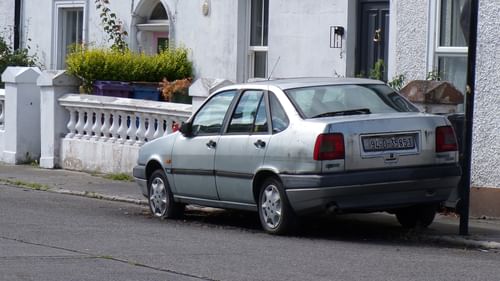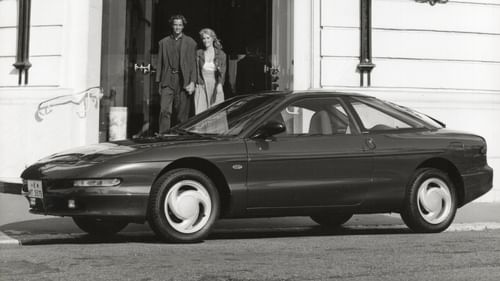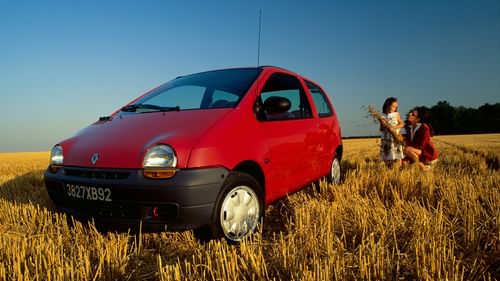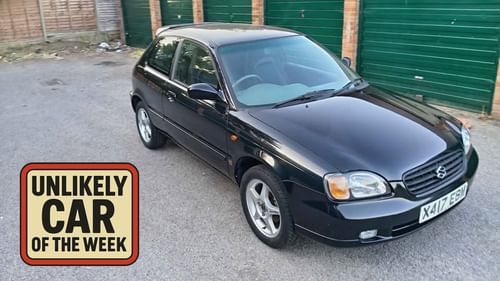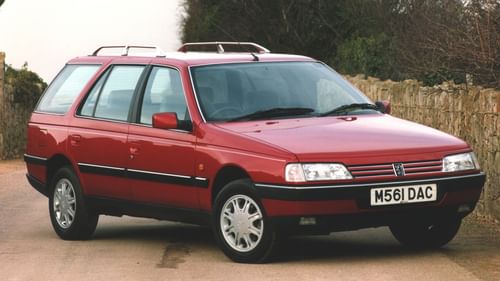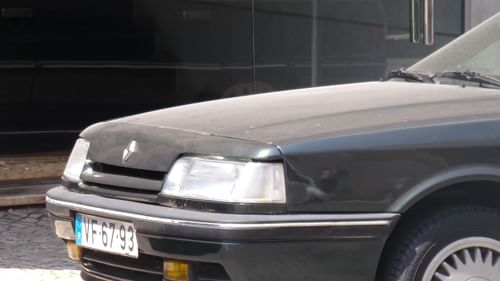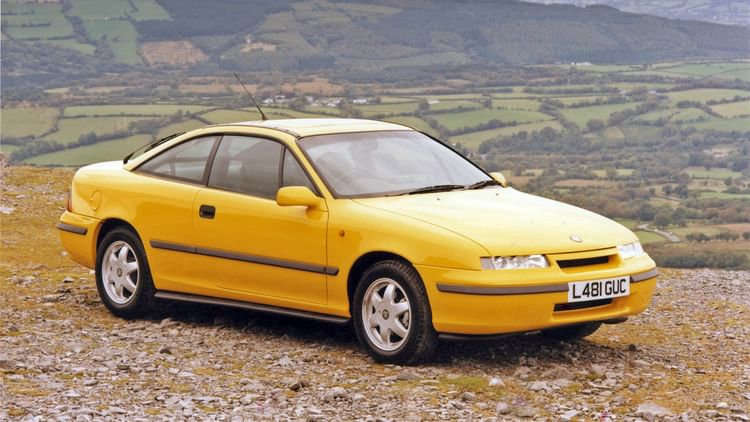
Coupés from mainstream manufacturers don’t stay fashionable for long. What’s hip and trendy today can ‘so past it, darling’ tomorrow. From Prada to Primark in the blink of an eye.
Richard Hammond summed it up in 2003 when, during a segment on how to spot a future classic, he argued that the Volkswagen Corrado was the only ’90s coupe ‘that isn’t completely embarrassing’, going on to ask, ‘what message are you sending the world when you’re seen climbing out of a Calibra, or a Probe, or even a Celica?’
Obviously, we don’t give a hamster’s arse what the world thinks of our cars, but Hammond was right, in a roundabout sort of way. Forget the Y2K bug, because it was as though the ’90s coupé wasn’t fit to see in the new century. Some cars died before the New Year fireworks over the River Thames (VW Corrado, Ford Probe and Mazda MX-6), while others were hanging on by a thread (Ford Cougar, Nissan 200SX and Honda Prelude). And then there’s the aerodynamic Vauxhall Calibra, launched in 1989, but gone with the wind by 1998, although production ended a year earlier.
General Motors gave the green light to the Calibra (Project 2670) in 1987, just as Ford was saying farewell to the car you always promised yourself. Uncle Henry went full Nostradamus, predicting the demise of the coupé, while GM reckoned there was a new breed of younger buyers, fed a diet of hot hatches, who fancied upgrading to something with a little more class. Demand would outstrip supply for an affordable coupé, it said, even with 30,000 cars rolling off the production line in the first year. Along with the Vauxhall version, the Calibra was sold as an Opel in Europe, a Holden in Australia and New Zealand until October 1991, a Chevrolet in Latin America from 1992 to 1996, and there was even a plan for a Saab version to be sold in America, but this idea was dropped due to the likely cost of meeting environmental and safety legislation. A convertible version was planned from the outset – designer Erhard Schnell insisted on the use of frameless doors for this and aesthetics reasons – and although two prototypes were built by Valmet Automotive in Finland, the likely high cost of development got in the way. A Saab Calibra and Calibra drop-top were two of the ’90s cars that got away. Shame.

Erhard Schnell died in 2020 at the age of 92, but he left quite a legacy. Although arguably most famous for his work on the Opel GT of the 1960s, he’s on record (should that be Rekord?) as saying the Calibra was his ‘favourite car’, adding that it ushered in ‘a new modern design language’ and that he ‘had complete freedom with the styling’. In 1989, Schnell told Autocar & Motor that the Calibra was designed in just seven days under the direction of Wayne Cherry. A case of Schnell by name, schnell by nature, then. Former Opel boss Jack Smith kickstarted the project, hoping to convince GM president Jim MacDonald that a new coupé was both feasible and desirable. Schnell may have had ‘complete freedom’ with the styling, but GM’s bean counters ensured that the Calibra wouldn’t be as exclusive underneath. To save time and money, the Calibra would use the GM2900 platform from the Cavalier, even though Schnell wanted a shorter wheelbase. He did get his way with other things, most notably the frameless doors, slim pillars and flowing roofline. The headlights, developed in conjunction with Hella, were another highlight. Just 70mm in height, they featured high and low-beam, fog lights and indicators in one unit. They also played a part in the Calibra’s famous aerodynamics.
Opel’s aerodynamics ace Hans-Joachim Emmelmann told Autocar & Motor how aero played a key role in the Calibra’s stunning styling, saying: ‘Everybody expects the front end to give the most improvement but the biggest potential is at the rear. Tapering the tail gave us 50 percent of the improvement, 15 percent came from the nose and the rest from work on underbody, bumpers and sills.’ There were plans for the Calibra to pay homage to the Manta with a split grille, but this was ditched in favour of a more conservative look. The single grille played a crucial role in the Calibra’s aerodynamic benchmark, much to the chagrin of Top Gear’s Chris Goffey. Only the entry-level 8-valve Calibra achieved the headline-grabbing drag coefficient of just 0.26, with the others boasting a less impressive 0.29Cd, almost identical to the Cavalier. Goffey called it ‘the sort of artistic license that gets the marketing men a bad name and for which car manufacturers are notorious.’ Maybe so, but the Calibra with the 2.0-litre 8-valve (C20NE) engine was by far the most successful version in the UK, shifting 15,163 units between May 1990 and the summer of 1998. That’s more than two-thirds (38 percent) of total sales (40,194). Proof, if proof were needed, that style often trumps dynamics in the coupé market.
How many of the 238,164 worldwide buyers were even aware of the Calibra’s wind-cheating heroics? Which is a pity, given the extraordinary lengths Opel went to in order to give the Calibra its USP (a record that stood until 1999 when the Honda Insight achieved a figure of 0.25. Emmelmann told Autocar & Motor that the integrated front spoiler with its lower section in front of the tyres produced a saving of 0.01, while the merging of the fuel tank into the rear bumper delivered an improvement of 0.005. Opel even took the Calibra to the DNW wind tunnel in the Netherlands where cars could be supported by hydraulic cranes above a moving belt which travelled at the same speed as the wind. This formed part of Vauxhall’s dealer launch material, which placed aerodynamics high up the list of sales messages. The intro to the launch party, rolled out across the dealer network in June 1990, said: ‘Welcome to a very special occasion and one that we take a special pride in. This evening you’re going to see a car which brings together in one package many of the exciting technical innovations that Vauxhall has developed and refined in recent years. And what a package it is. It has the lowest drag coefficient of any production car in the world – bar none. And it’s a full four-seater. This car is so aerodynamic that, during development, normal testing extended to tests in a special tunnel normally used to stimulate the landing of the European Airbus.’ If we were feeling naughty, we could say something about the weight of an airliner and the fact that the Calibra was heavier than the Cavalier, but this is a celebration of the coupé, so we won’t.

UK sales began in June 1990, with buyers given a choice of two engines (8-valve and 16-valve) and one trim level. The 2.0-litre 16-valve 4x4 version was introduced in September 1990, along with the option of a four-speed automatic on the 8-valve car. The 2.0-litre 16-valve Turbo 4x4 model arrived in 1992, followed by the 2.5-litre V6 a year later, before the 2.0-litre 16-valve Ecotec (X20XEV) engine replaced the ‘redtop’ (C20XE) in 1994. The Calibra was facelifted in September 1994, with all cars adopting Vauxhall’s corporate ‘V’ grille. There were several special editions, including SE models numbered 1 to 9. One of the rarest and most desirable is the Tickford, introduced in October 1990 and available for two years. With no performance upgrades, this was an acceptance of the Calibra’s status as a high-spec four-seater coupé, rather than a sports car. Available with both the 8-valve and 16-valve engines, the Tickford Calibra featured grey leather or Alcantara upholstery, three-spoke leather steering wheel, 15-inch five-spoke alloys and several other cosmetic upgrades. Archivist Darrell Stowe, who runs a Calibra group on Facebook, told us that 26 cars were converted, and he owns the only roadworthy example.
And beauty was always the point of the Calibra. Autocar & Motor called it ‘possibly the most beautiful production car in the world’, later adding that it’s ‘one of the sexiest-looking cars on Earth’. High praise, but it would be difficult to deny the Calibra its crown at a beauty pageant. So why was the car’s fall from grace so swift and severe? The fashionable nature of the coupé market played a part, as did the industry’s rather snobbish attitude to anything with a Vauxhall badge. But there’s no getting away from the fact that its Cavalier platform was no laughing matter. While some coupés could talk the talk and walk the walk (we’re looking at you, VW Corrado), others fell silent when it came to ride and handling. On the road, the Calibra flattered to deceive.
Reviewing the 8-valve version in 1990, Autocar & Motor said, ‘There is absolutely no suggestion of any flair to its handling’, pointing to the basic MacPherson strut front suspension and the trailing arm, independent rear suspension shared with the Cavalier. All versions had power steering and four-channel ABS as standard, while the 16-valve had gas-filled struts, with the 4x4 version featuring firmer suspension bushes and a smaller anti-roll bar. Autocar & Motor preferred the honesty of the 8-valve version to the 16-valve, saying, ‘it is slower, but makes up much of this deficit by using its torque to keep pace. And it misses out on the torque steer and wheelspin of the 16-valve car. It handles and rides better, uses much less fuel and costs £2500 less despite having an identical equipment specification bar a set of alloys. We cannot recommend it as a sports coupé – it’s too slow-witted. But as an ultra-stylish car with a genuine family side to its accommodation, the Calibra 2.0i is untouchable for the price.’ A four-seater coupé with a decent boot, good fuel economy and style matched only by the Peugeot 406 Coupé in period – where do we sign? Hammond was wrong: the Calibra was anything but an embarrassment.

It could have been better. There were reports that GM would enlist the help of its Norfolk plaything to improve the ride and handling of its aerodynamic wonder. Maybe even a Lotus Calibra, to upset readers of the Daily Mail. Vauxhall MD Bill Ebbert poured cold water over the rumours, telling Autocar, ‘We don’t underestimate the depth of talent we have at our disposal at Lotus, but we’re still searching for the right relationship, the right balance.’ He added that a Lotus version would cost £30,000 or even £40,000, roughly £65,000 to £85,000 in today’s money, which would have been a big ask in the 1990s, even with a Lotus badge. Still, what a shame Hethel wasn’t ready to create a legendary Calibra, especially when you remember that, in Turbo 4x4 guise, it could hit 152mph. In 1992, this made it the UK’s fastest mass-production car. If only Lotus had been able to harness this potential.
Darrell Stowe tells us that there are 74 pre-facelift cars and 341 facelifted cars with an MOT, which represents just 1 percent of the total sales in the UK. A pitiful survival rate for one of the most beautiful Vauxhalls ever made and arguably the most beautiful coupé of the 1990s, although the 406 Coupé might want a word.
It also proved that GM was right, and Ford was wrong, with the Calibra topping the coupé sales charts for the first three years after launch. Small wonder that Ford tried (and failed) to re-enter the market with the Probe and Cougar. Yes, the interior was dull and the chassis was underwhelming, but for styling and aerodynamics, the Calibra was a knockout. And its name isn’t being dusted off for use on an electric SUV…
With thanks to Darrell Stowe of the Calibra Register UK Facebook page, and the excellent Vauxpedia website. This article first appeared in issue 30 of Classic.Retro.Modern. magazine.
